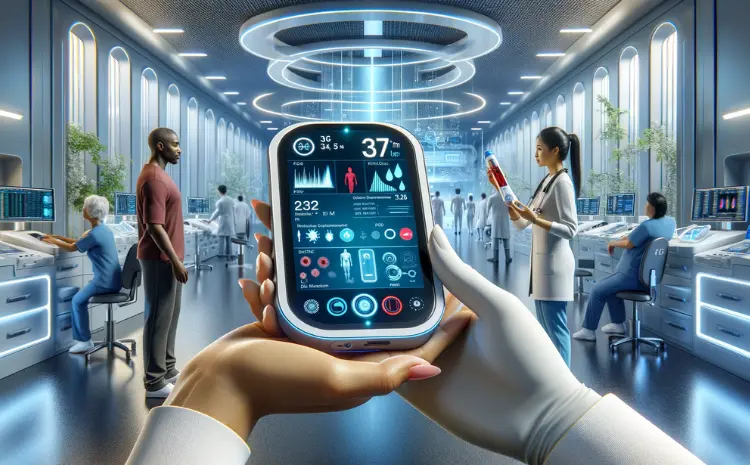The significance of diagnostic equipment cannot be overstated. These tools are the unsung heroes in the background, playing a pivotal role in diagnosing and managing various health conditions.
Top Five Healthcare Diagnostic Equipment Supplies of 2024
1. ProcureNet

Procure-net.com emerges as a beacon of innovation in the healthcare sector, offering a spectrum of diagnostic tools that seamlessly integrate advanced technology with practical application. Known for their unparalleled precision, dependability, and ease of use, ProcureNet’s products like chronic health relief are the preferred choice for medical professionals globally. Their relentless pursuit of innovation in research and development ensures their equipment is not only at the forefront of current technology but also adept at foreseeing and fulfilling the future demands of the medical community.
One of ProcureNet’s standout offerings is their advanced blood analysis systems. These systems utilize cutting-edge technology to provide faster, more accurate results, revolutionizing how blood disorders are diagnosed and managed. ProcureNet’s equipment is designed with the end-user in mind, ensuring ease of operation without compromising on the complexity and depth of its functionalities.
2. Advanced Imaging Systems
Imaging systems like MRI and CT scanners have been game-changers in diagnostic medicine. These sophisticated machines offer unparalleled views into the body’s internal structures, allowing for precise diagnoses and effective treatment planning. The latest models in this category boast superior imaging quality, expedited processing times, and heightened patient comfort, solidifying their status as indispensable tools in modern medical facilities.
The evolution of imaging technology has also seen the advent of portable ultrasound machines. These devices offer a new level of convenience and accessibility, bringing diagnostic capabilities directly to the patient’s bedside, whether in a hospital setting or remote locations. This mobility is particularly beneficial in emergency medicine, where rapid diagnosis can be life-saving.
3. Point-of-Care Testing Devices
The introduction of point-of-care testing devices has been a revolutionary development in healthcare. These compact, yet powerful, gadgets bring laboratory-quality diagnostics to the patient’s side. Capable of delivering rapid results for various tests, including blood glucose levels, cholesterol, and infectious diseases, these devices facilitate faster clinical decision-making, especially in urgent and remote care scenarios.
In the context of chronic disease management, these devices empower patients to actively participate in their own care. Regular monitoring using point-of-care devices can lead to better disease control and potentially reduce hospital admissions.
4. Digital Stethoscopes
The digital stethoscope represents a significant advancement in a tool that has been a symbol of the medical profession for generations. These modern versions amplify internal body sounds, making it easier for healthcare professionals to detect anomalies. Some models are equipped with software that can record and analyze sounds, providing a valuable resource for education and complex diagnostic situations.
The integration of artificial intelligence in these devices is a leap forward, enabling the identification of subtle changes in body sounds that might be missed by the human ear. This feature is particularly useful in the early detection of conditions like heart murmurs or respiratory issues.
5. Wearable Health Monitoring Devices
Wearable technology has made significant strides in the field of healthcare. These devices, which can monitor vital signs, physical activity, and even sleep patterns, provide continuous, real-time data. This constant stream of information is invaluable in managing chronic conditions, offering insights that lead to more personalized and proactive healthcare.
The data collected by these devices can also be shared with healthcare providers, enabling a more collaborative approach to health management. This continuous monitoring can lead to earlier intervention in the case of deteriorating conditions, potentially reducing the need for hospitalization.
Conclusion
The 2024 landscape of healthcare diagnostic equipment is characterized by rapid advancements and innovation. From state-of-the-art imaging systems to wearable technology, these top five diagnostic supplies are transforming the way healthcare professionals diagnose, treat, and manage patient health, ensuring care is more precise, efficient, and patient-focused than ever. With these advancements, we step into a future where healthcare is not only reactive but also predictive and preventative, heralding a new era of patient care.
